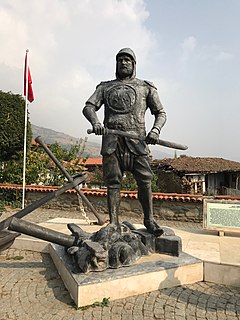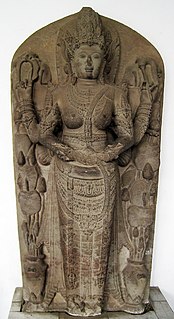 W
WAbu Sa'id Bahadur Khan, also spelt Abusaid Bahador Khan, Abu Sa'id Behauder, was the ninth ruler of the Ilkhanate, a division of the Mongol Empire that encompassed the present day countries of Iran, Azerbaijan, Georgia, and Armenia, as well as portions of Iraq, Turkey, Afghanistan, and Pakistan.
 W
WAnushirwan Khan occupied the Ilkhanid throne from 1344 until his death in 1357. He was a puppet of the Chobanid ruler Malek Ashraf and possessed no power of his own. He is notable for being the last of the Ilkhan dynasty to have coins struck in his name.
 W
WShaykh Uways Jalayir was the Jalayirid ruler of Iraq (1356–1374) and Azerbaijan (1360–1374). He was the son of Hasan Buzurg and the Chobanid princess Dilshad Khatun.
 W
WKing Borommarachathirat I or King Borom Rachathirat I, also known as Khunluang Pha Ngua ; 1370–1388), was the third king of Ayutthaya Kingdom.
 W
WSomdetch Brhat-Anya Fa Ladhuraniya Sri Sadhana Kanayudha Maharaja Brhat Rajadharana Sri Chudhana Negara ລາວ: ສົມເດັດ ພຣະບາດ ອັນຍາ ຟ້າ ລັດທຸຣັນຍາ ສຣີ ສັດຕະນາ ຄະນະຍຸດທາ ມະຫາຣາຊ໌ ພຣະບາດ ຣາຊະທໍຣະນາ ສຣີ ສັດຕະນະ ນະຄອນ, better known as Fa Ngum, established the Lao kingdom of Lan Xang in 1353.
 W
WMahmud Ghazan was the seventh ruler of the Mongol Empire's Ilkhanate division in modern-day Iran from 1295 to 1304. He was the son of Arghun, grandson of Abaqa Khan and great-grandson of Hulagu Khan continuing a long line of rulers who were direct descendants of Genghis Khan. Considered the most prominent of the Ilkhans, he is best known for making a conversion to Islam and meeting Imam Ibn Taymiyya in 1295 when he took the throne, marking a turning point for the dominant religion of Mongols in Western Asia. One of the many principal wives of him was Kököchin, a Mongol princess sent by his great-uncle Kublai Khan.
 W
WHayam Wuruk, also called Rajasanagara, Pa-ta-na-pa-na-wu, or Bhatara Prabhu, (1334–1389), was a Javanese Hindu King from the Rajasa Dynasty and the fourth monarch of the Indianised Majapahit Empire. Together with his prime minister Gajah Mada, he reigned the empire at the time of its greatest power. During his reign the Hindu epics, the Ramayana and the Mahabharata, became ingrained in the culture and worldview of the Javanese through the wayang kulit. He was preceded by Tribhuwana Wijayatunggadewi and succeeded by his son-in-law Wikramawardhana. Most of the accounts of his life were taken from Nagarakretagama and Pararaton.
 W
WJayanegara or Jayanagara, Prince of Kediri in 1295, reigned from 1309 to 1328, was a Javanese King and the second monarch of Majapahit empire. Jayanegara was the heir, crown prince, the son of Raden Wijaya, the founder of Majapahit. The story of his life was written in several records, including Pararaton and Negarakertagama. His reign saw the beginning of Gajah Mada's rise as an important figure in the empire.
 W
WQāżi Aḥmad Borhān al-Din was an Oghuz Turkic vizier to the Eretnid rulers of Anatolia. In 1381 he took over Eretnid lands and claimed the title of sultan for himself. He is most often referred to by the title Qadi, a name for Islamic judges, which was his first occupation.
 W
WSultan Mohammed Öz Beg, better known as Uzbeg or Ozbeg, was the longest-reigning khan of the Golden Horde, under whose rule the state reached its zenith. He was succeeded by his son Jani Beg.
 W
WMaha Thammaracha I, born as Li Thai, was a king of the Sukhothai Kingdom, and the first Buddhist philosopher to write in the Thai language. He reigned from roughly 1347 until his death in 1368. Li Thai was the son of Loe Thai and the grandson of Ram Khamhaeng the Great.
 W
WMangrai, also known as Mengrai, was the 25th king of Ngoenyang and the first king of Lanna. He established a new city, Chiang Mai, as the capital of the Lanna Kingdom (1296–1558).
 W
WQavam al-Din ibn Abdallah al-Marashi, better known as Mir Buzurg or Mir Bozorg, was the founder of the Marashi dynasty, ruling from 1359 to 1362.
 W
WÖljeitü, also known as Muhammad Khodabandeh, was the eighth Ilkhanid dynasty ruler from 1304 to 1316 in Tabriz, Iran. His name "Ölziit" means "blessed" in the Mongolian language.
 W
WParameswara, thought to be the same person named in the Malay Annals as Iskandar Shah, was the last king of Singapura and the founder of Malacca. According to the Malay Annals, he ruled Singapura from 1389 to 1398. The king fled the island kingdom after a Majapahit naval invasion in 1398 and founded his new stronghold on the mouth of Bertam river in 1402. Within decades, the new city grew rapidly to become the capital of the Malacca Sultanate. Portuguese accounts, written a hundred years after his death, however, suggest he was from Palembang and usurped the throne of Singapura before he was driven out, either by the Siamese or the Majapahit, and founded Malacca.
 W
WSomdet Phra Ramesuan, son of king Ramathibodi I, reigned as the second and fifth king of the kingdom of Ayutthaya. When King Ramathibodi ascended to the throne of Ayuthaya, he sent King Ramesuan to reign in Lavo. Upon King Ramathibodi's death in 1369, King Ramesuan traveled to Ayutthaya to assume the throne, but held it for less than a year before being deposed by his uncle, King Borommaracha I, the ruler of Suphanburi. Sources differ over the nature of their conflict; official chronicles state that the older Boromaracha ruled with the willing consent of his nephew, while Jeremias van Vliet's Short History of Thailand indicated that Boromaracha's ascension came only after a bloody conflict bordering on civil war.
 W
WPaduka Sri Rana Wikrama ('Ranavikrama') was the eldest son of Sri Wikrama Wira with his wife Nila Panjadi, and the third Raja of Singapura. He was known as Raja Muda his accession and married to a daughter of Bendahara Tun Perpatih Muka Berjajar. His reign was from 1362 to 1375.
 W
WTaejo of Joseon, born 李成桂 was the founder and the first king of the Joseon dynasty of Korea. After ascension to the throne, he changed his name to 李旦. He reigned from 1392 to 1398, and was the main figure in the overthrowing of the Goryeo Dynasty.
 W
WKing Thong Lan was a king of Ayutthaya, an ancient kingdom in Thailand.
 W
WTogha Temür, also known as Taghaytimur, was a claimant to the throne of the Ilkhanate in the mid-14th century. Of the many individuals who attempted to become Ilkhan after the death of Abu Sa'id, Togha Temür was the only one who hailed from eastern Iran, and was the last major candidate who was of the house of Genghis Khan. His base of power was Gurgan and western Khurasan. His name "Togoy Tomor" means "Bowl/Pot Iron" in the Mongolian language.
 W
WTokhtamysh, a prominent Khan of the Blue Horde, briefly unified the White Horde and Blue Horde subdivisions of the Golden Horde into a single state. He descended from Genghis Khan's grandson, Tuqa-Timur.
 W
WUmur Ghazi, Ghazi Umur, or Umur The Lion, also known as Umur Pasha was the second Emir of Aydin, on the Aegean cost of Anatolia, from 1334 to 1348. He was famous for his naval expeditions. As a writer, poet and patron of the arts and sciences, Kalila wa-Dimna was first translated to Persian during his reign. Umur was described in an epic chronicle Düstürnâme-i Enverî, written by poet and historian Enveri during the reign of Sultan Mehmed II, as "the 'Lion of God' leading a just and holy war of conquest against the 'miscreants' and infidel Christians". According to an unreliable but colorful source, two Venetian ambassadors remarked that he was immensely fat with a stomach "like a wine casket". They had found him wearing silks, drinking almond milk and eating eggs with spices from a golden spoon. Umur Ghazi was a loyal ally and friend of Emperor John Cantacuzenus of the Byzantine Empire and provided him with material aid during his military campaigns, especially during the Byzantine civil war of 1341–1347. He apparently sent 380 ships and 28,000 men to aid him in the conflict and besieged the city of Demotika in Thrace, Greece. The emperor John reportedly mourned his death. At the height of its power, the Emirate of Aydin possessed 350 ships and 15,000 men.
 W
WSang Nila Utama was a Srivijayan prince from Palembang and is the founder of the Kingdom of Singapura in 1299. His official title adopted upon his coronation was Sri Tri Buana, which can be translated as "Lord of Three Worlds"; the "Three Worlds" may refer to the three realms of the universe – the overworld/heaven of the gods, the world of humans, and the underworld of demons or his lordship over Java, Sumatra and Temasek/Singapura. This title is attested to elsewhere in Southeast Asia.
 W
WKing U-thong or King Ramathibodi I was the first king of the kingdom Ayutthaya, reigning from 1350 to 1369. He was known as Prince U Thong before he ascended to the throne in 1350. He was thought to have been a descendant of Mangrai.
 W
WRaden Wijaya or Raden Vijaya was a Javanese King, the founder and the first monarch of the Majapahit Empire. The history of his founding of Majapahit was written in several records, including Pararaton and Negarakertagama. His rule was marked by the victory against the army and the navy of Kublai Khan's Yuan dynasty.
 W
WTribhuwana Wijayatunggadewi, known in her regnal name Tribhuwannottunggadewi Jayawishnuwardhani, also known as Dyah Gitarja, was a Javanese queen regnant and the third Majapahit monarch, reigning from 1328 to 1350. She also bears the title Bhre Kahuripan. With the help of her prime minister Gajah Mada, she pursued a massive expansion of the empire. Tradition mentioned her as a woman of extraordinary valour, wisdom and intelligence.
 W
WWikramawardhana was a Javanese king and succeeded Hayam Wuruk as the fifth monarch of the Majapahit empire, reigning from 1389 to 1429. He was the nephew and also the son-in-law of the previous monarch after taking princess Kusumawardhani, Hayam Wuruk's daughter, as his wife. His co-reign with his queen consort was challenged by Hayam Wuruk's other offspring, Bhre Wirabhumi. Bhre Wirabhumi felt that he had a better right to be successor since he was the only son of the late monarch. Wirabhumi, however, lacked legitimacy because his mother was a concubine, not the queen consort. The struggle for succession resulted in the Paregreg war. Despite Wikramawardhana's success in winning the war and defeating Wirabhumi, the civil war gravely weakened previously unchallenged Majapahit hegemony in Nusantara and loosened Majapahit's grip on its far flung vassal kingdoms. His invasion of Singapore in 1398 however, is a success.